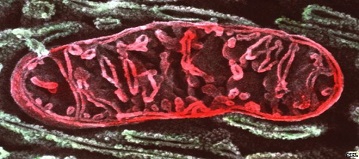
Brian Bennett
Marquette University, USA
Title: Electron Paramagnetic Resonance (EPR) Spectroscopy for Diagnosis and Characterization of Mitochondrial Dysfunction and Diseases
Biography
Biography: Brian Bennett
Abstract
Mitochondrial disease (MD) presents with a wide range of clinical, pathological, and biochemical outcomes and is, consequently, very difficult to diagnose conclusively. EPR is a magnetic resonance technique that detects and characterises unpaired electrons that are present in transition metal ions in certain oxidation states (e.g. FeIII, CuII, MnII), clusters thereof (e.g. [2Fe2S]+red, [3Fe4S]+ox, [4Fe4S]+red), and free radicals (e.g. UQ•−, FADH•). The mitochondrial respiratory chain complexes I - IV contain 23 potentially paramagnetic centers that exhibit distinct EPR signals depending on their redox potentials, the availability of electrons, the catalytic competence of each of the enzymatic complexes, and the integrity of the electron transport chain (ETC). In addition, EPR signals may be observed from UQ•−, and from the [3Fe4S]+ cluster of m- aconitase that arises due to oxidative stress. Key factors thought to be involved in the symptoms and pathology of MD are lowered ATP production, and the production of toxic reactive oxygen species (ROS). Either or both of these can occur when electron transfer is impeded due to lowered expression, lowered activity, or structral alteration of ETC complexes, or compromised ingress or egress of reducing equivalents. EPR of rapidly-frozen fresh biopsy tissue is uniquely able to provide a snapshot of the electron distribution among the redox centers in the functioning mitochondrial ETC, against a background of other biochemical and pathological assays. We recently described the first application of this methodology, to a rat model of MD (Bennett et al. 2016 Free Rad. Biol.Med. 92, 141-151), and will here describe progress toward translation of the approach for diagnosis and differentiaition of MDs in children.


